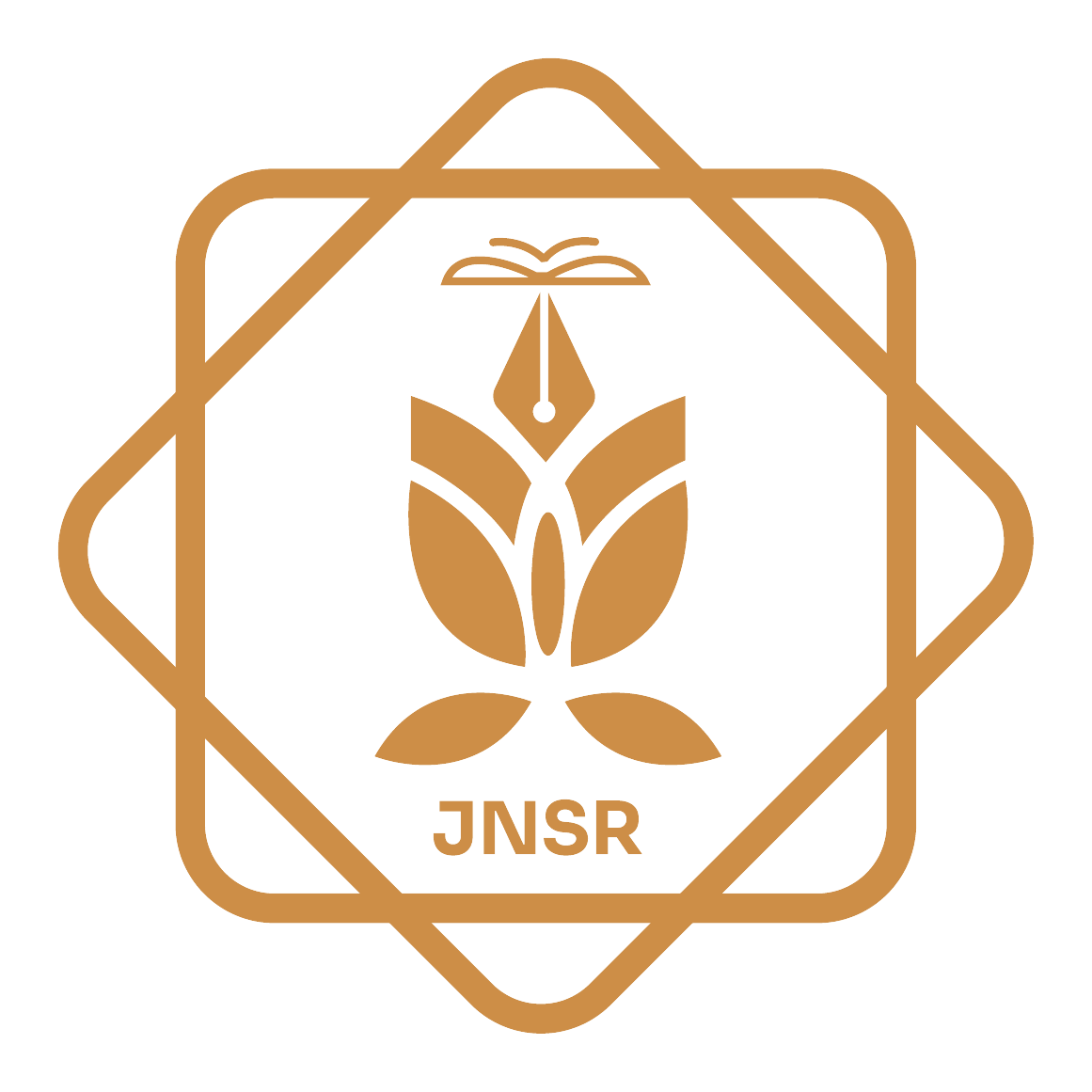Comparison of Newton Raphson – Linear Theory and Hardy Cross Methods Calculations for a Looped Water Supply Network
DOI:
https://doi.org/10.62810/jnsr.v2i2.40Keywords:
Linear theory , Newton-Raphson method, Hardy-Cross method, Water networksAbstract
This study conducts a comparative analysis between the Newton-Raphson and Hardy Cross methods for solving a looped main linear water network consisting of 4 pipes. The research findings demonstrate a high degree of unity between the outcomes obtained from these two methods, thereby validating their accuracy and reliability in solving water network equations. While the Newton-Raphson method shows faster convergence than the Hardy-Cross Method, both approaches effectively plan and analyze water networks. The analytical methodology employed in this study provides valuable insights into the applicability and efficiency of these methods in optimizing gravity main water networks. By combining the strengths of the Newton-Raphson and Hardy Cross methods, engineers and planners can make informed decisions to enhance the performance and sustainability of water distribution systems. The findings contribute to advancements in water infrastructure planning and design, aiming to ensure efficient and reliable water supply to meet the evolving needs of urban and rural communities.
Downloads
References
Ackers, P. (1958). Resistance of fluids flowing in channels and pipes. Wageningen University and Research Library catalog. London, England. https://library.wur.nl/WebQuery/titel/297839
Alan, C. T. (2000). Water Supply, 5th Edition. IWA Publishing London. https://www.abebooks.co.uk/servlet/BookDetailsPL?bi=30986676253
Basica, A., & Tucciarelli, T. (2003). Simultaneous zonation and calibration of pipe network parameters. Journal of Hydraulic Engineering, 129(5), 402-422 https://doi.org/10.1061/(ASCE)0733-9429(2003)129:5(394) DOI: https://doi.org/10.1061/(ASCE)0733-9429(2003)129:5(394)
Bruce. Munson., & Donald F. (2009). Fundamental of fluid mechanics, Sixth Edition. John Wiley & Sons. INC.
Campbell, A.T.et al. (1994). Identification of Odour Problems in the R. Dee. JIWEM, 8(1), 52-58 https://doi.org/10.1111/j.1747-6593.1994.tb01092.x DOI: https://doi.org/10.1111/j.1747-6593.1994.tb01092.x
Cross, H. (1936). "Analysis of flow in networks of conduits or conductors" Egineering Experement Station. 34(1), 4-38.
DoE. UK Water Research Centre. (2005). Bankside Storage and Infiltration System. Report to the Department of the Environment. https://www.ircwash.org/resources/bankside-storage-and-infiltration-systems-env-9037-final-report-department-environment
Darvishi, M., & Barati, A. (2007). A third-order newton-type method to solve systems of nonlinear equations. Applied Mathematics and Computation, 187(2), 630-635. DOI: https://10.11121/ijocta.01.2020.00684 DOI: https://doi.org/10.1016/j.amc.2006.08.080
Giustolisi, O. (2010). Considering actual pipe connections in water distribution network analysis. Journal of Hydraulic Engineering. 136(11), 889-900. Doi: https://doi.org/10.1061/(ASCE)HY.1943-7900.0000266 DOI: https://doi.org/10.1061/(ASCE)HY.1943-7900.0000266
Gupta, N., Pilesjo, P., & Maathuis, D. (2010). Use of Geoinformatics for Inter-Basin Water Transfer Assessment. Water Resources and the Regime of Water Bodies 37(3) 623-637. DOI: https://10.2478/jwld-2018-0058 DOI: https://doi.org/10.1134/S0097807810050039
Maleki, B., & Mozaffari, E. (2016). “A Comparative Study of the Iterative Numerical Methods Used in Mine Ventilation. International Journal of Advanced Computer Science and Applications, 7(6): 356-362. https://pdfs.semanticscholar.org/526d DOI: https://doi.org/10.14569/IJACSA.2016.070646
Miguel, B. (2000). A review of recent design procedures for water networks in refineries and process plants. International Journal of Advanced Computer Science and s, 24(10): 2093-2113. https://doi.org/10.1016/S0098-1354(00)00579-2 DOI: https://doi.org/10.1016/S0098-1354(00)00579-2
Hund, D., & Yu, C. (2008). Lin pipe network system analysis using simulated annealing. Journal of Water Supply Research and Technology. 57(5) 317:327. DOI: https://doi.org/10.2166/aqua.2008.052 DOI: https://doi.org/10.2166/aqua.2008.052
Morris, D. G., & Heerdegen R. G. (1988). Automatically Derived Catchment Boundaries and Cahnnel Network and their Hydrological Application. Journal of Geomorphology 1(2), 131-141. https://doi.org/10.1016/0169-555X(88)90011-6 DOI: https://doi.org/10.1016/0169-555X(88)90011-6
Tabesh, T. T. Tanyimboh., & R. Burrows. (2001). Head-driven simulation of water supply networks. JSID. 15(1), 11-22. https://doi.org/10.1016/j.proeng.2016.07.428 DOI: https://doi.org/10.1016/j.proeng.2016.07.428
Martin, D., & Peters, G. (1963). The application of newton’s method to network analysis by digital computer. Journal of the Institute of Water Engineers, 17(2), 115. DOI: https://wellcomecollection.org/works/d7vf5kd4
Michele, G., Zoran, K. and Dragan, S. (2012). Using high performance techniques to accelerate demand driven hydraulic solvers. Journal of Hydro informatics, 15(1), 38-54. https://doi.org/10.2166/hydro.2012.198 DOI: https://doi.org/10.2166/hydro.2012.198
Moosavian, N. (2014). Hydraulic Analysis of water supply networks using a modified hard Darcy method. International Journal of Engineering. 27(9) 1331-1338. https://www.ije.ir/article_72370.html DOI: https://doi.org/10.5829/idosi.ije.2014.27.09c.02
Prabhata, K., Swamee, A., Sharma, K. (2008) Design of water supply pipe network, John Wiley & Sons, Inc. https://books.google.com.af/books?hl=en&lr=&id DOI: https://doi.org/10.1002/9780470225059
Santosh, K.G. (2013). Water Supply Engineering. https://www.amazon.in/Water-Supply-Engineering-Environmental-Vol-2/dp/B0C2VWFJRJ
Sharma, K. D., & Singh, S. (1992). Runoff estimation using landsat thematic mapper data and the SCS model. Hydrological Sciences Journal, 37(1), 39–52. Doi: https://doi.org/10.1080/02626669209492560 DOI: https://doi.org/10.1080/02626669209492560
Sultanbekova, A. K., Mitusov, A. V., Azami, A., & Sagintayev, J. M. (2021). Karizes and Current Prospects for Their Use in Kazakhstan. Central Asian Journal of Water Research. 7, 181–198. DOI: https://doi.org/10.29258/cajwr/2021-r1.v7-2/181-198.eng DOI: https://doi.org/10.29258/CAJWR/2021-R1.v7-2/181-198.eng
Wood, D.J., & Charles, C. O. (1972). Hydraulic network analysis using linear theory, Journal of the Hydraulics Division, Vol. 98, No. 7, 1157-1170. Doi: https://doi.org/10.1061/JYCEAJ.0003348 DOI: https://doi.org/10.1061/JYCEAJ.0003348
Downloads
Published
How to Cite
Issue
Section
License
Copyright (c) 2024 Mujeebullah Mujeeb, Lutfullah Safi, Ainullah Mirzazada

This work is licensed under a Creative Commons Attribution-NonCommercial 4.0 International License.



























